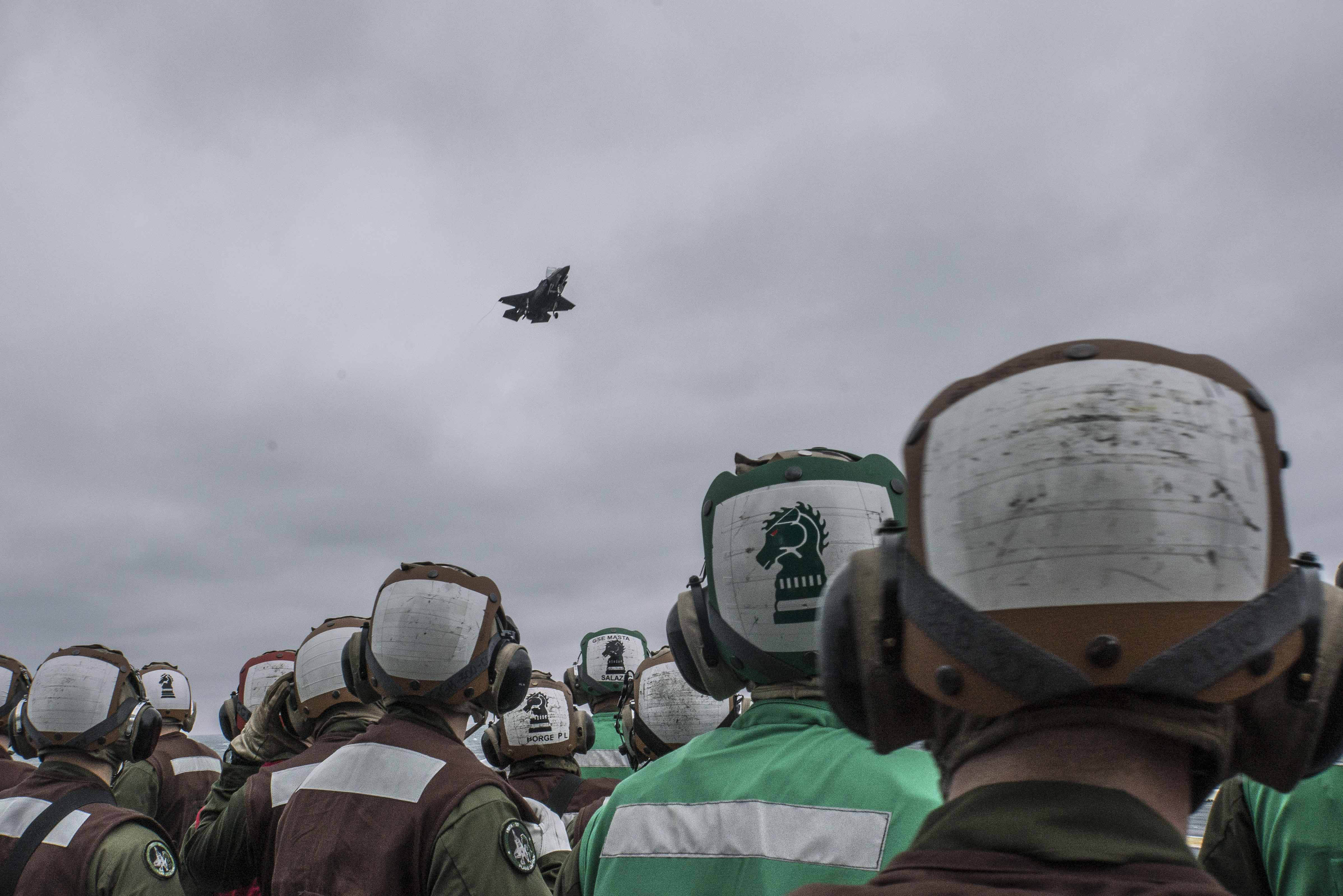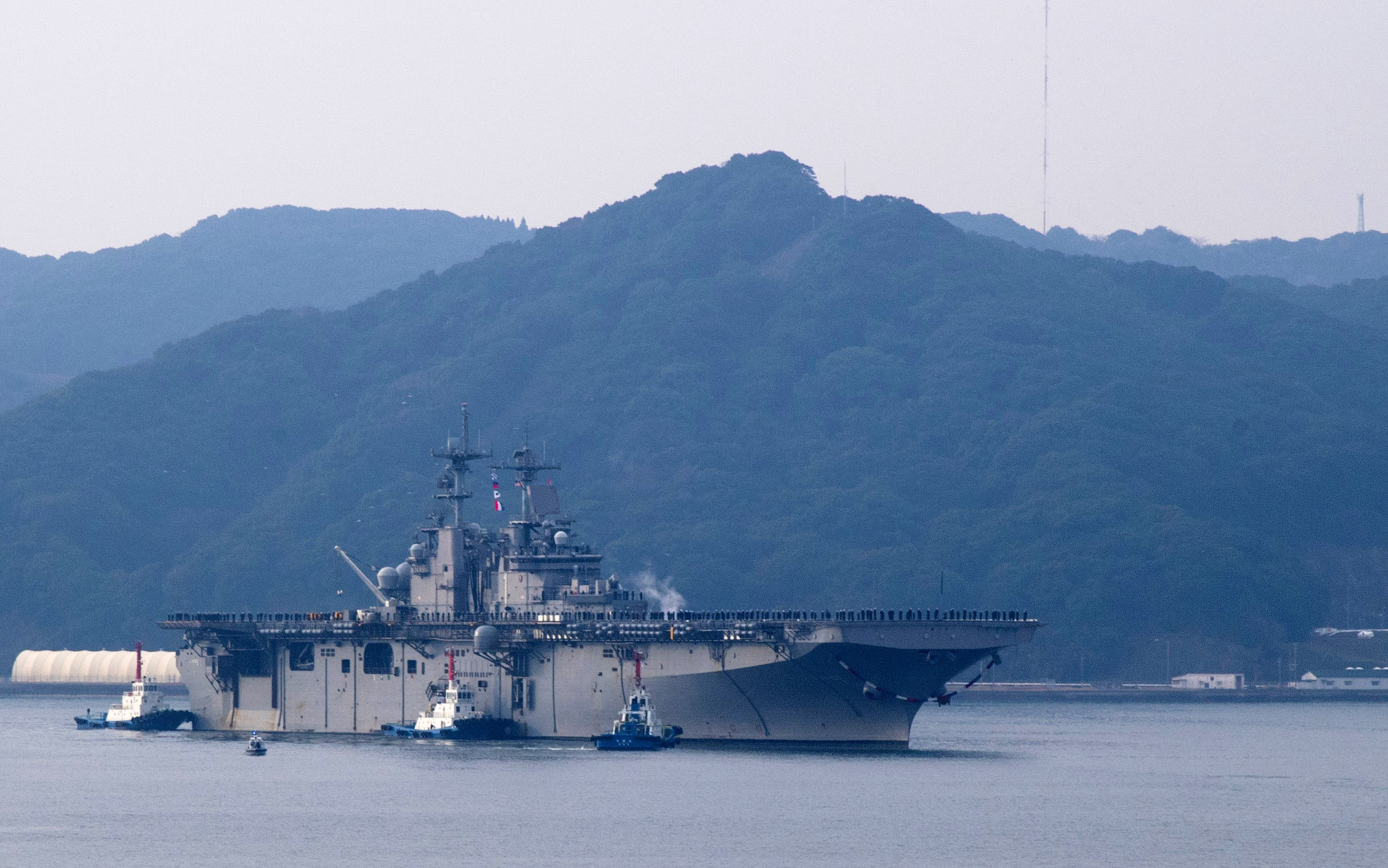
The Marines have sent their first operational squadron of F-35B Lighting II Joint Strike Fighters to sea for the aircraft’s first deployment on Monday, the service announced.
Six F-35Bs from the “Green Knights” of Marine Fighter Attack Squadron (VMFA) 121 landed on the deck of amphibious assault ship USS Wasp (LHD-1) as part of the Wasp Expeditionary Strike Group (ESG) and 31st Marine Expeditionary Unit Western Pacific patrol.
“This is a historic deployment,” Col. Tye R. Wallace, 31st MEU Commanding Officer, said in a statement.
“The F-35B is the most capable aircraft ever to support a Marine rifleman on the ground. It brings a range of new capabilities to the MEU that make us a more lethal and effective Marine Air-Ground Task Force.”
VMFA-121 is the first operational squadron of the fighters that will eventually replace the Marine Corps’ F/A-18 Hornet, EA-6B Prowler and AV-8B Harrier jets to support Marines ashore. The squadron became the first deployable squadron of Marine F-35s in 2015.
Early last year, the Green Knights relocated from Arizona to Marine Corps Air Station Iwakuni, Japan, as the Marines’ forward-deployed fighter squadron that would support the Navy’s forward ARG.
The aircraft landed on the ship’s flight deck following Wasp’s departure from its new homeport of Sasebo, Japan, on March 3. Wasp will deploy with two guided-missile destroyers – USS Dewey (DDG-105) and USS Sterett (DDG-104). The destroyers were added as part of the so-called “up-gunned ESG” concept that would add additional anti-surface and anti-air capability to the traditional three-ship amphibious ready group.
The addition of the F-35 to the Navy’s amphibious fleet has the promises of greatly increasing the capability of ARG/MEUs to wage high-end war. For example, as part of the Navy’s Naval Integrated Fire Control-Counter Air (NIFC-CA) construct, Marine F-35s could provide targeting information of enemy ships and aircraft to attached destroyers in an ESG. In 2016, Lockheed Martin proved that a ship-launched Raytheon Standard Missile 6 could be cued from the sensors on an F-35.

While not as capable as a full-sized carrier strike group, an upgunned ESG would have more lethal capability on its own than previous amphibious deployments. Forces in the Western Pacific have been experimenting with non-traditional surface group deployments in last several years.
A second F-35B squadron, the Avengers of VMFA-211, is set to deploy from the West Coast aboard USS Essex (LHD-2).





